A while ago I wrote a blog about how Reindeer House managed to cope with its temporary hitch back in the summer, when its resident staff caught Covid. I mentioned then that Andi and I (who live outside of Reindeer House and managed to stay unaffected) were responsible throughout for the 8am morning check of the herd on the hill, so I thought I’d perhaps explain a little more about what we do in the mornings, before visitors arrive, in another blog. So I have put fingers to keyboard and here we are.
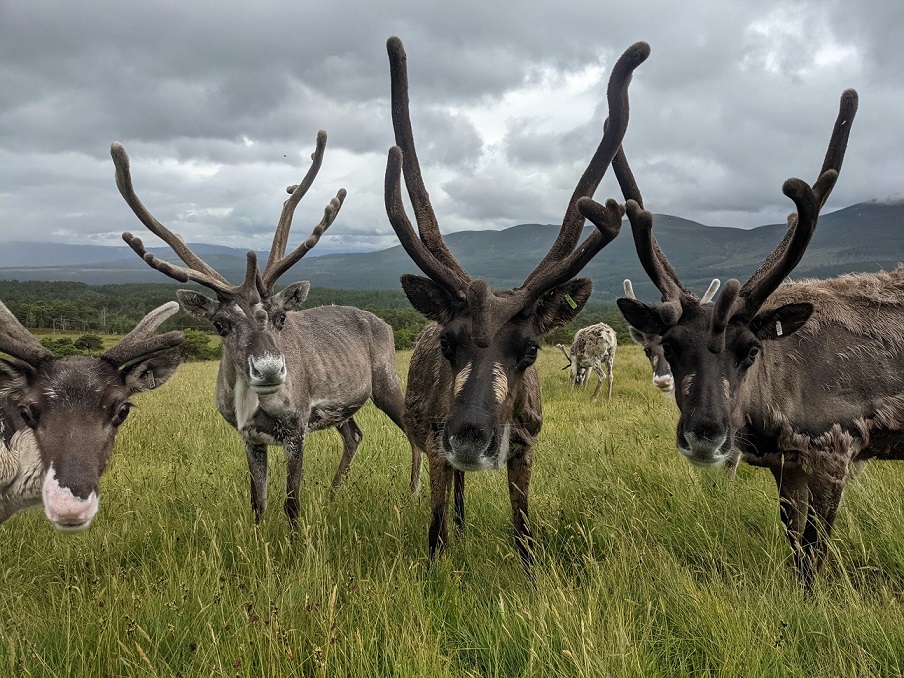
Throughout the whole summer we run the guided Hill Trips up to meet the reindeer in our hill enclosure at 11am and 2.30pm, but the herd are actually fed 3 times a day. By doing the first feed bright and early, it gives us time to check everything is shipshape and ready for the day, allowing us to then concentrate on making sure our visitors have as good a visit as possible, with us safe in the knowledge that all the reindeer are happy and healthy.
Usually 2 or 3 of us will head up early doors, and in the summer there is usually only one group of reindeer in the enclosure to deal with. By comparison right now as I’m writing this (early October), there are reindeer in 5 separate areas of the enclosure, all needing checking and feeding at least twice daily! One group only is much more straightforward and seems like a distant dream right now.
The very first job of the day, before heading to the hill enclosure, is to drive up to the ski centre to check none of the free-ranging reindeer are nearby. Right in the middle of summer this would be unusual, but they do sometimes surprise us, so it’s always worth a check! A convenient layby also gives us a bird’s eye view of much of the enclosure, so we have a quick scan over it too.
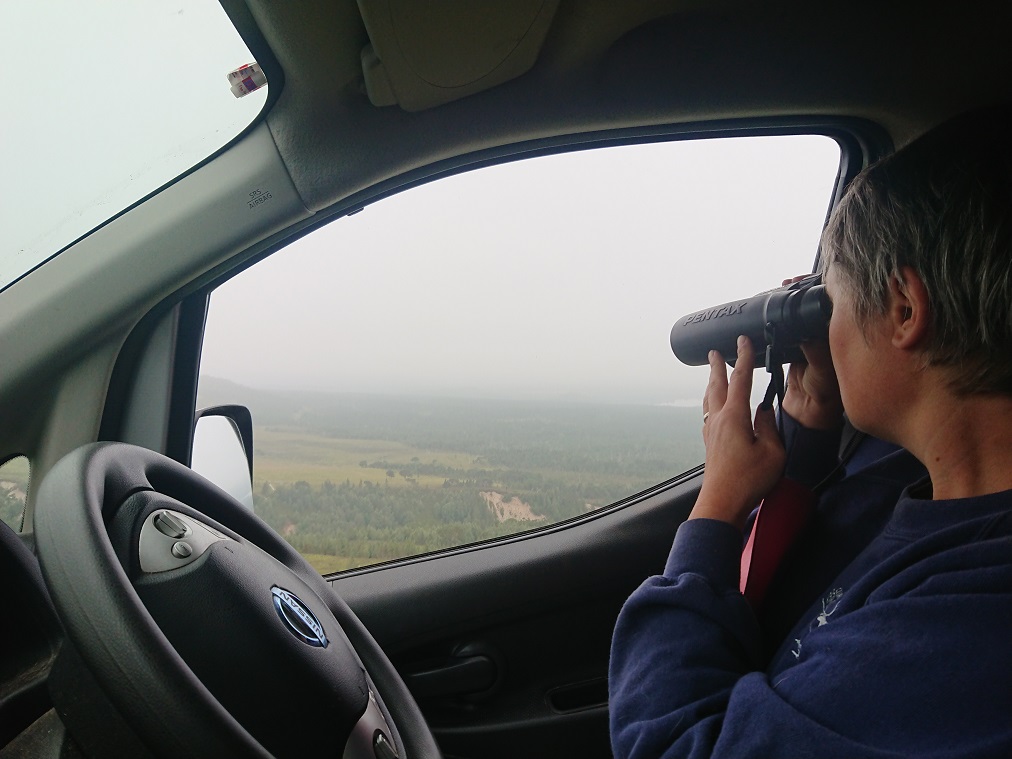
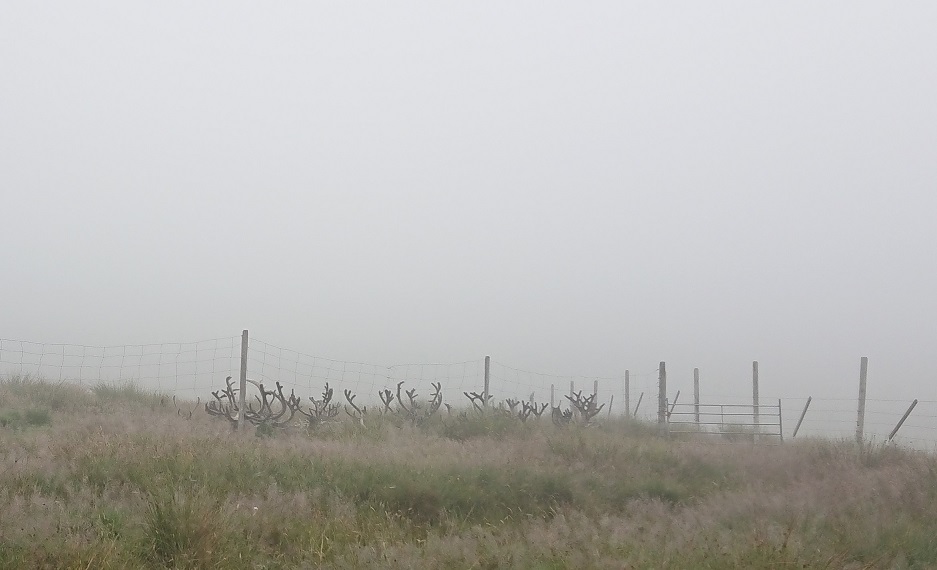
The hill enclosure is around 1200 acres in size; about 2km in length. The nearest end of it consists of several smaller areas, and our first job of the day is to bring the herd through to the nearest area, the ‘bottom corridor’, and to see if everyone walks through cheerfully and willingly. A reindeer who is off colour will lose their appetite and is quite likely to trail through a distance after the others, less enthusiastic about the prospect of breakfast, so that is the first clue of someone feeling under the weather.
If we are suspicious any reindeer is not quite themselves, the first thing we do then is to check their temperature – so it pays not to be the last reindeer through the gate, otherwise there could be a thermometer up your bum before you know what’s happening! However, a high temperature indicates a tick-borne fever, and a shot of antibiotics is the next step, which should nip any infection in the bud.
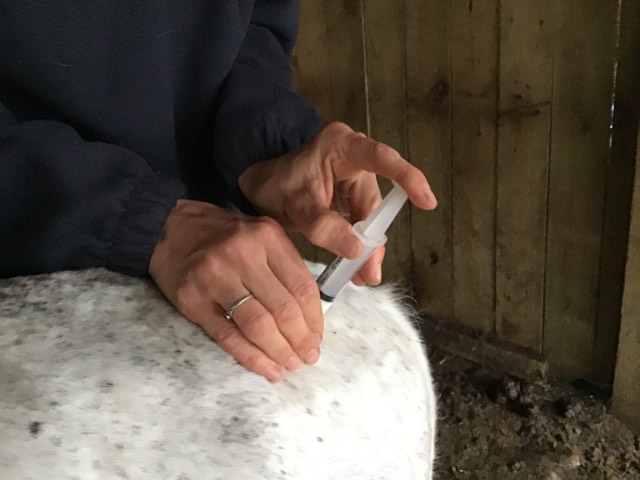
Once every week or so in the summer we’ll get the whole herd up to our shed and work our way through the whole herd, checking temperatures, as some reindeer are very good at not showing any symptoms at all even when they have a roaring fever. This type of fairly intensive routine monitoring isn’t necessary in the winter months as there are no ticks about then, but the warmer weather brings them out and so reindeer do get very used to regular violations of their dignity…
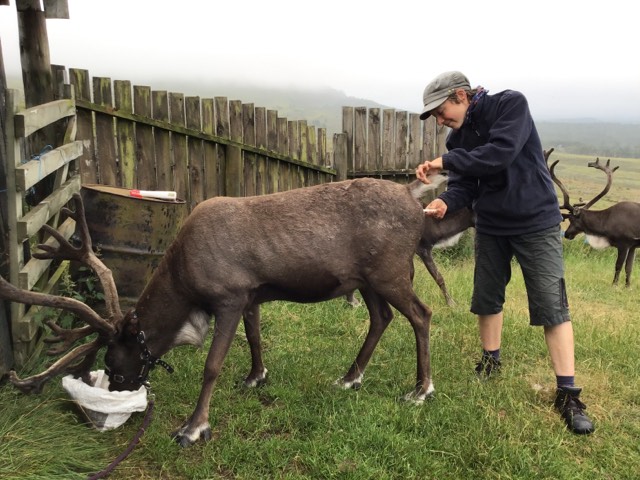
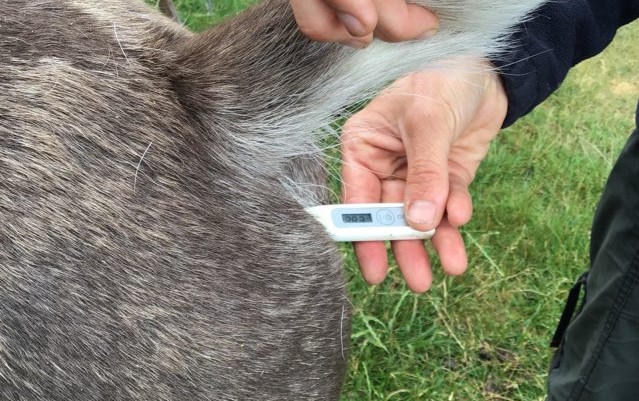
Something else that needs doing regularly of a summer’s morning, even daily at times, is fly-spraying. Like with any animal, flies will buzz around the reindeer on sunny days, and whilst they don’t generally cause any real problem, they drive the reindeer mad at times. No-one likes having flies buzzing round their face! With the reindeer, the flies tend to aim for the antlers, clustering around the soft growing tips where the blood supply is richest. If a tiny nick in the velvet skin is made, the flies will feed on the blood and this brings with it the risk of infection.
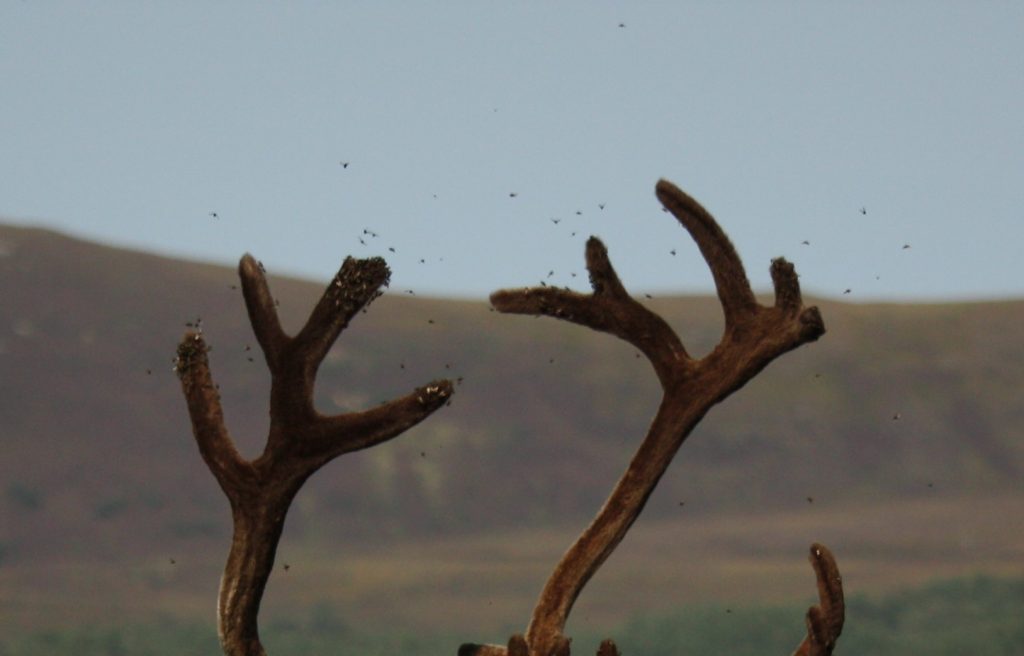
So we spray the antlers to help keep the flies off, using a DEET-based spray that is designed for horses. But unfortunately we can’t wipe the spray on with a cloth as reindeer hate their antlers being touched whilst they are growing (and also it would take forever to do 40-odd reindeer this way!), so we have to just spray it on, accepting that – from a financial point of view at least – an upsettingly large percentage of it is lost or misses it’s target. Reindeer very rarely stand quietly to have their antlers sprayed, either doing their best to pull away from us, or rushing around in circles if contained in the shed. But there’s no way around it – antlers need spraying and it’s better for the herd to be rather flustered for a few minutes each morning than spend the day charging around to get away from the flies.
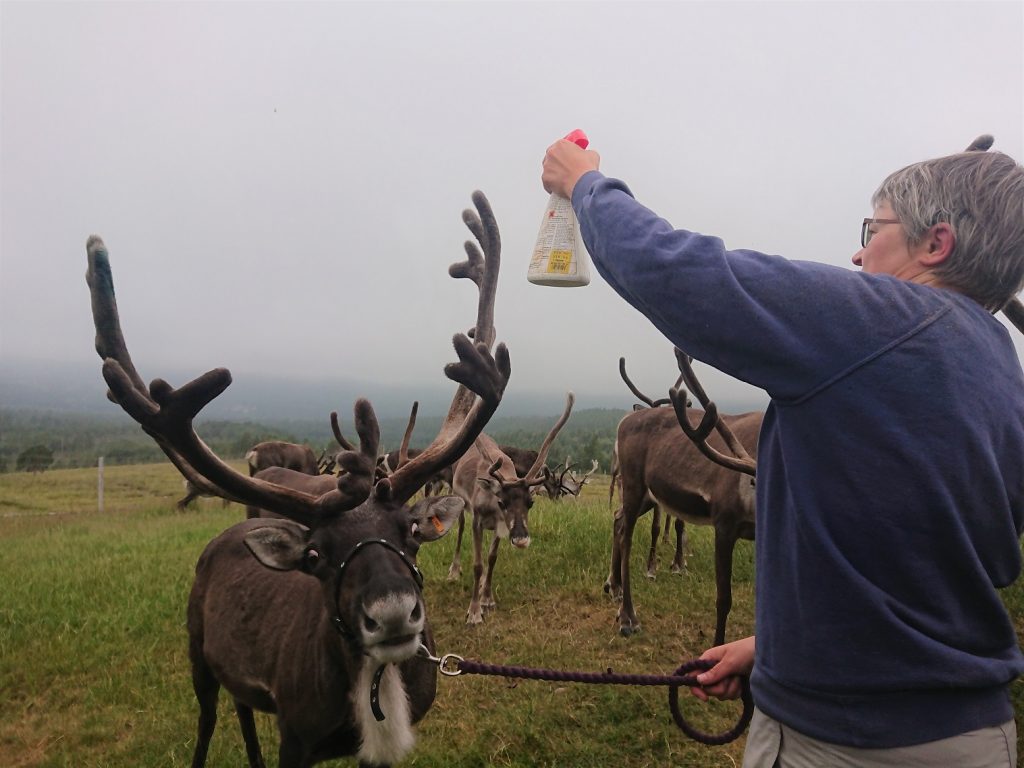
On an average summer’s morning, at this point it’s breakfast time! Just like on the Hill Trips, we tip the bag of feed out into small piles in a big long line, count to check every reindeer is present and correct, and make sure every is eating enthusiastically. And then – just as importantly – head back down to the Reindeer Centre and stick the kettle on…
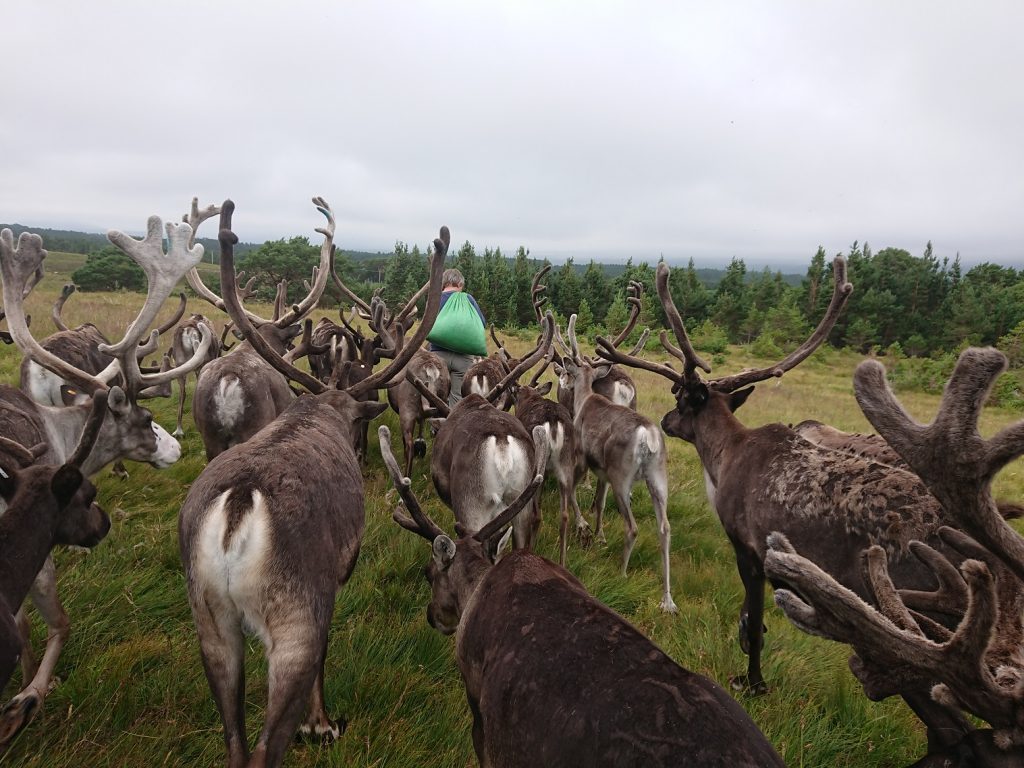
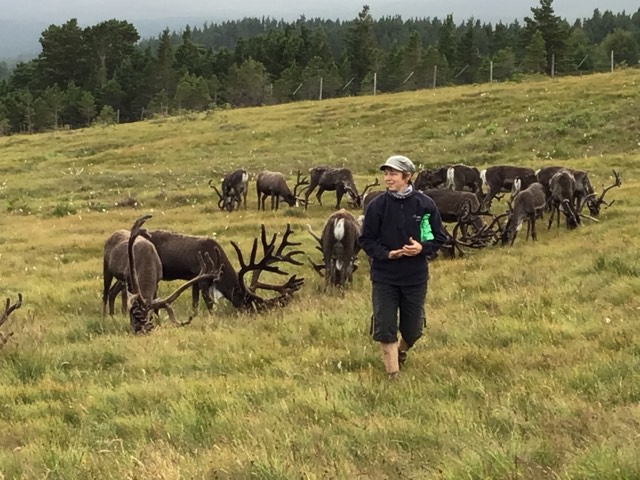
This first couple of hours of the morning is also when we do any ‘movement’ of reindeer if needed, such as letting reindeer out to free-range on the mountains outside the enclosure, or swapping over the reindeer in the Paddocks with those up in the hill enclosure. We also regularly poo-pick the nearer areas of the enclosure where the reindeer congregate, or do maintenance jobs on the fencing and boardwalks. I suspect people sometimes wonder why we don’t open any earlier than 10am, but these couple of hours are sacred to us – the time flies by all too quickly and we’re still often left scrabbling around trying to get finished and back to the Centre in time to open on schedule!
Hen
